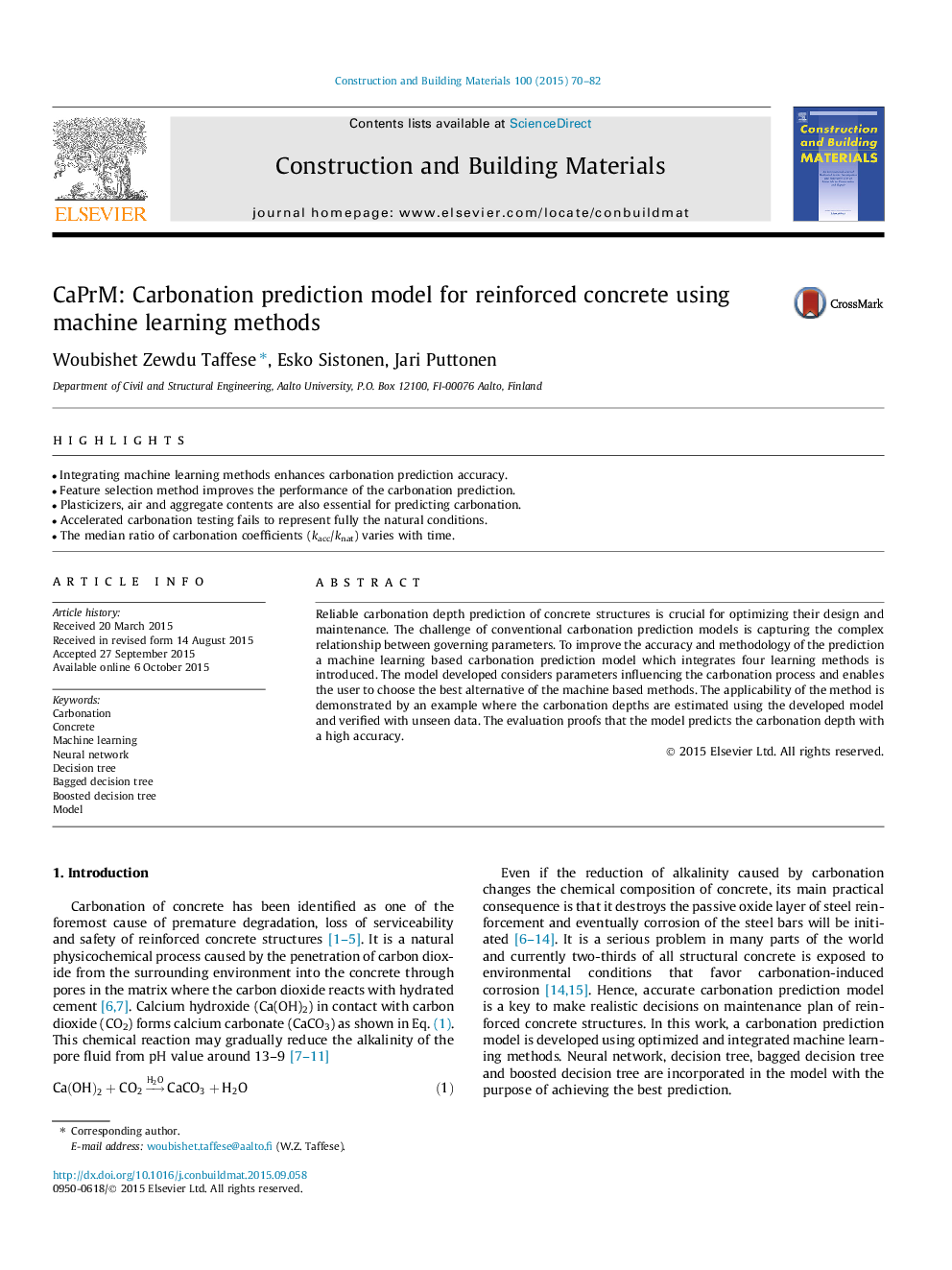| Article ID | Journal | Published Year | Pages | File Type |
|---|---|---|---|---|
| 256541 | Construction and Building Materials | 2015 | 13 Pages |
•Integrating machine learning methods enhances carbonation prediction accuracy.•Feature selection method improves the performance of the carbonation prediction.•Plasticizers, air and aggregate contents are also essential for predicting carbonation.•Accelerated carbonation testing fails to represent fully the natural conditions.•The median ratio of carbonation coefficients (kacc/knat) varies with time.
Reliable carbonation depth prediction of concrete structures is crucial for optimizing their design and maintenance. The challenge of conventional carbonation prediction models is capturing the complex relationship between governing parameters. To improve the accuracy and methodology of the prediction a machine learning based carbonation prediction model which integrates four learning methods is introduced. The model developed considers parameters influencing the carbonation process and enables the user to choose the best alternative of the machine based methods. The applicability of the method is demonstrated by an example where the carbonation depths are estimated using the developed model and verified with unseen data. The evaluation proofs that the model predicts the carbonation depth with a high accuracy.
